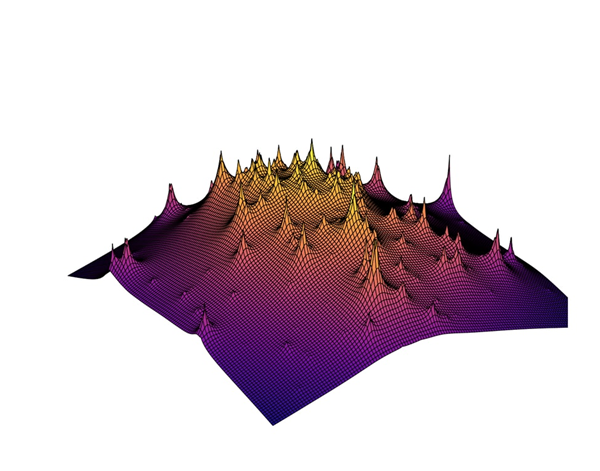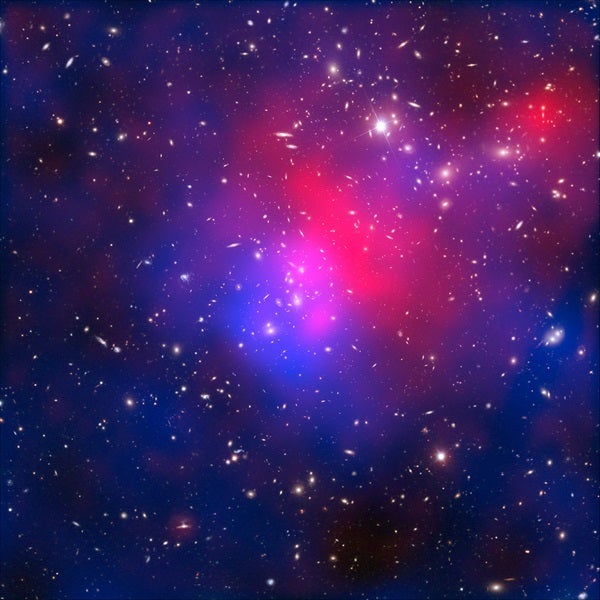We don’t know what dark matter is yet, but thanks to researchers at Yale and other universities, we now know where it’s at in three nearby galactic clusters.
The team, led by Priyamvada Natarajan, used gravitational lensing techniques (where a massive object bends light around it to act like a magnifying lens) to study the details of galaxy clusters Abell 2744, MACSJ 0416, and MACSJ 1149 in depth.
The initial images came from the Hubble Space Telescope. Measuring the distortions caused by gravitational lensing on background galaxies showed where invisible masses were still bending space around it enough to cause lensing events.
Dark matter is named so because of a “missing mass” in the universe. The rate of expansion for the universe doesn’t fit the amount of objects we can see. In fact, we can only see 5 percent of the total mass of the universe, with dark matter accounting for 27 percent and dark energy accounting for the rest.
Several solutions for dark matter have been proposed. This includes weakly interacting massive particles (WIMPs), MAssive Compact Halo Objects (MACHOs), and other exotic kinds of particles. WIMPs and other particles would constitute a type of matter that doesn’t interact with the matter we see all around us, but exerts a gravitational force. MACHOs are objects that are invisible to telescopes, like black holes, brown dwarfs, pulsars, and more that we haven’t yet detected, though there are significant doubts that they could account for the missing matter. Some dark matter researchers believe that MACHOs may account for a small chunk of the missing mass, with WIMPs making up the greater portion.
While we haven’t directly detected dark matter, it’s known to exist because of studies of the rotation rates of galaxies carried out by researchers like Fritz Zwicky and Vera Rubin. By mapping where dark matter is, astrophysicists may be able to gain a better understanding of how it clumps and what it might be made of.
The study was published in Monthly Notices of the Royal Astronomical Society.











